Abstract
The performance of a 15 degrees elbow flexion and a 30N hand squeeze was studied in nine normal subjects and in five patients with Parkinson's disease. The patients were studied when immobile after 12-18 hours withdrawal from antiparkinsonian drug therapy (OFF) and when more mobile after drugs (ON). Subjects performed each movement separately (simple movements) and both movements either simultaneously or sequentially (complex movements). The duration of both movements and the time between the onset of each movement in the sequential task (interonset latency) were measured. The patients OFF therapy had longer movement times than normal for both movements; these improved after levodopa but still were not normal. When the patients performed complex movements there was an extra slowness, over and above that seen for simple movements, in both movements of the simultaneous task and in the second movement of the sequential task. In addition, the interonset latency in the sequential task was longer than normal. After levodopa there was a more striking improvement in the movement times of complex movements than there had been for simple movements. The interonset latency in the sequential task was shorter than before therapy though still was not the same as in normal subjects. It is suggested that the basal ganglia are not only involved in the execution of simple motor programmes, but also play some role in the superimposition and sequencing of motor programmes.
Full text
PDF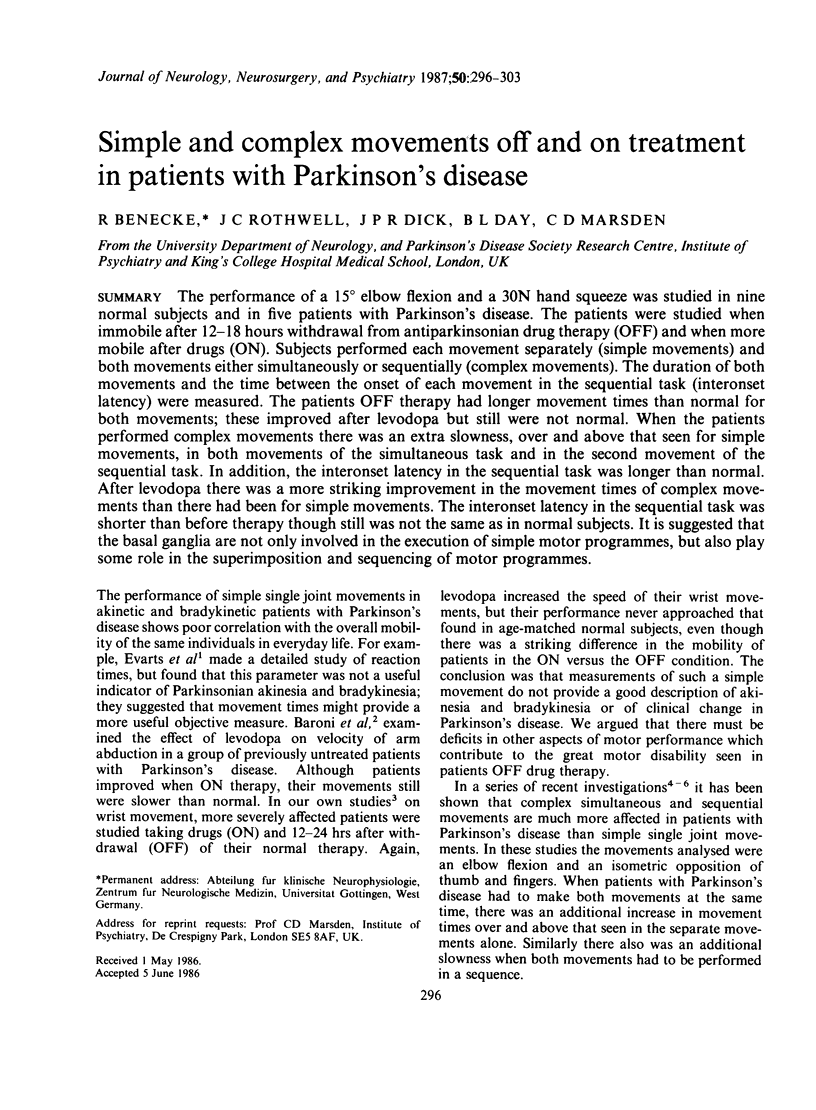
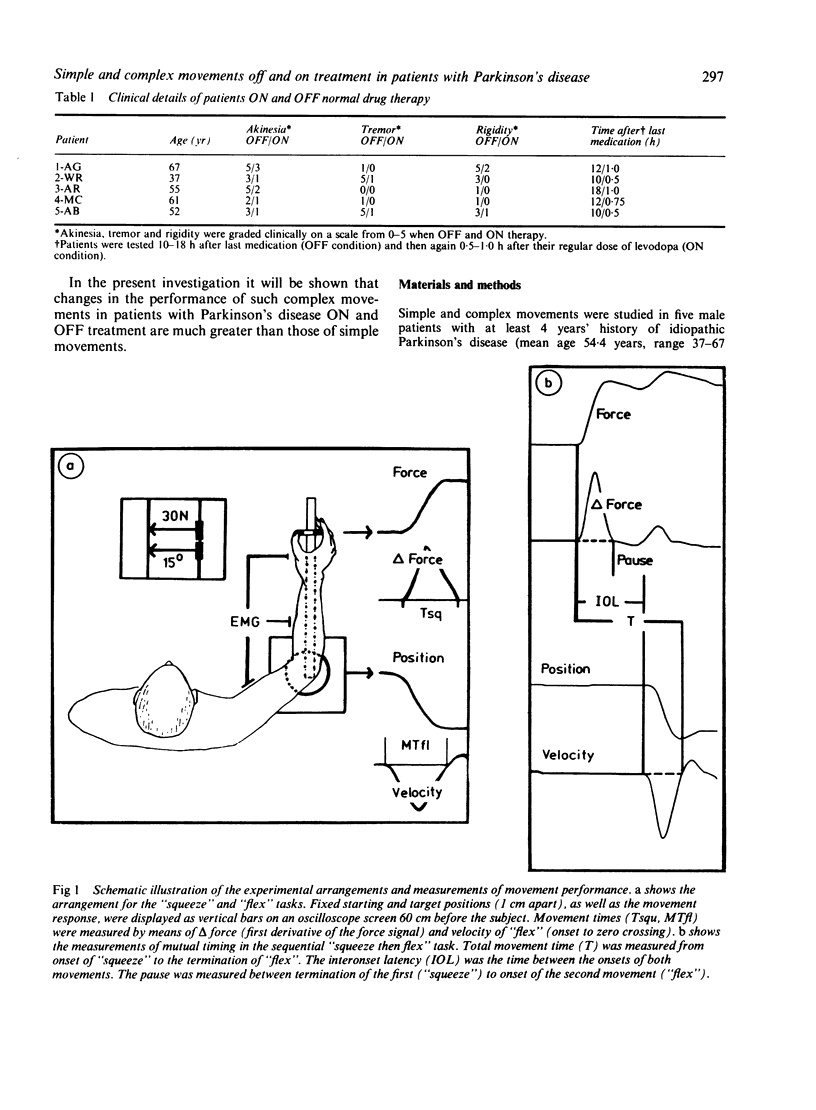
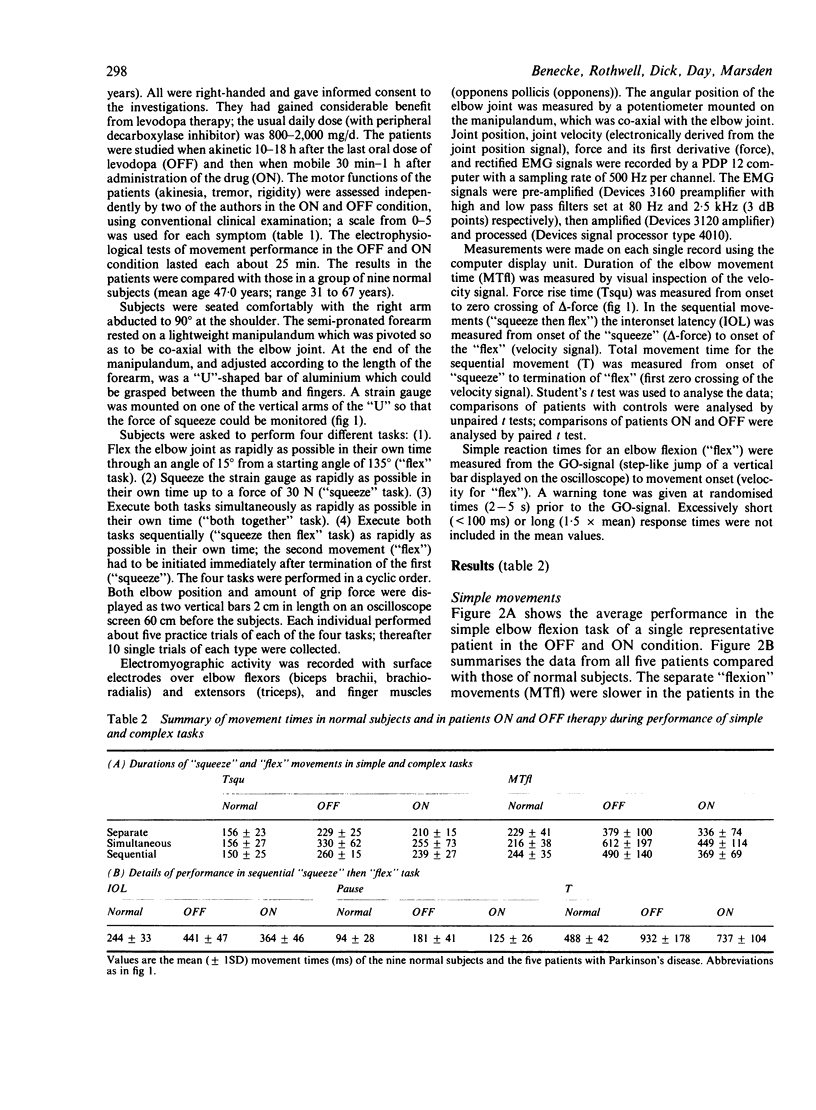
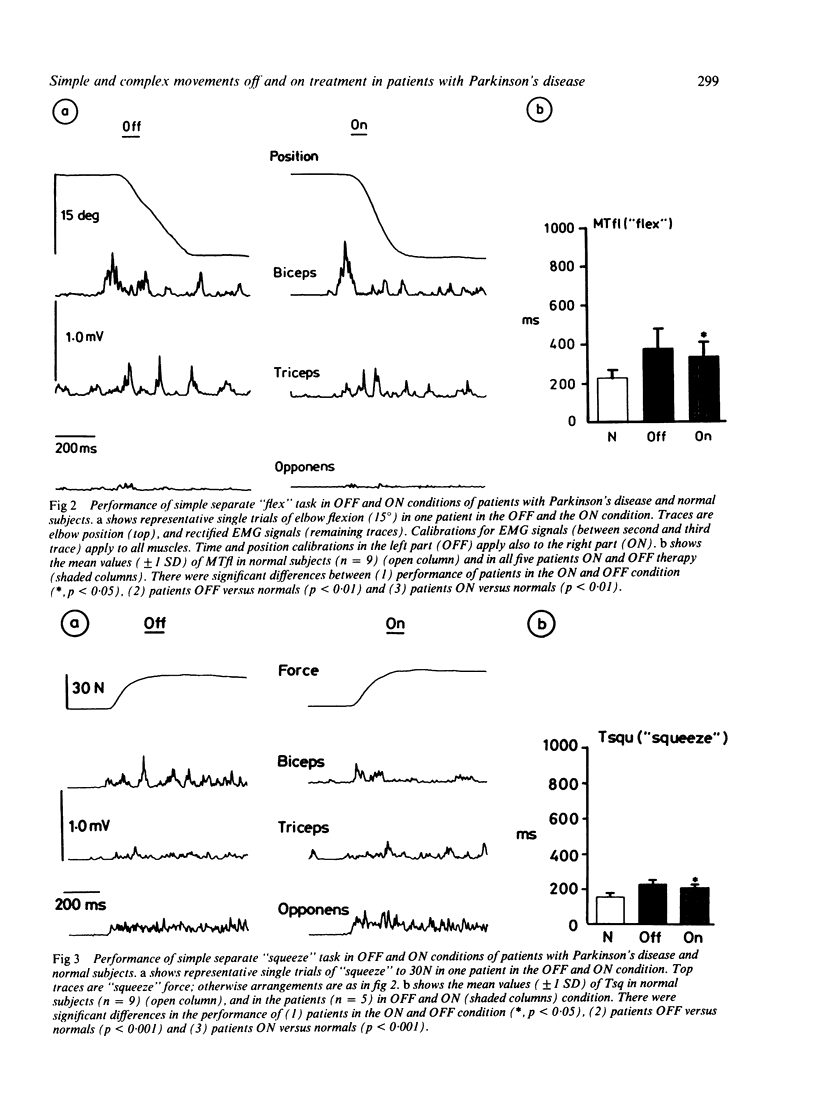
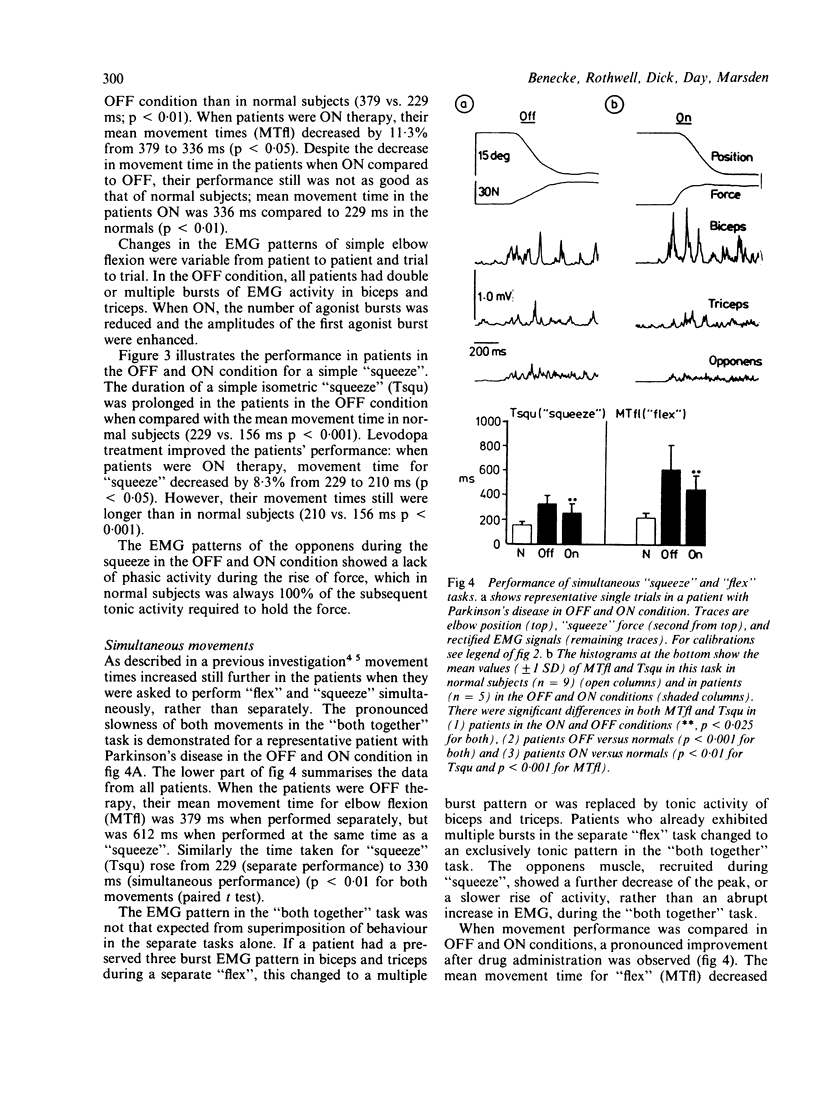
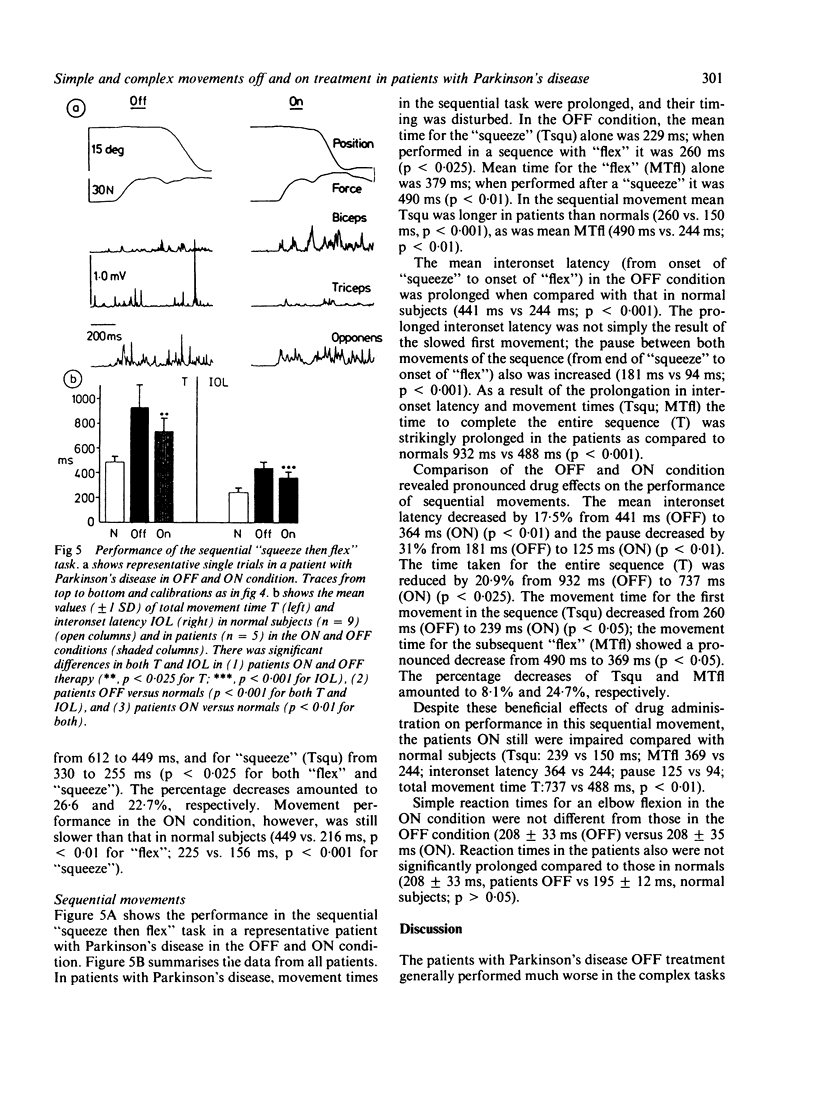
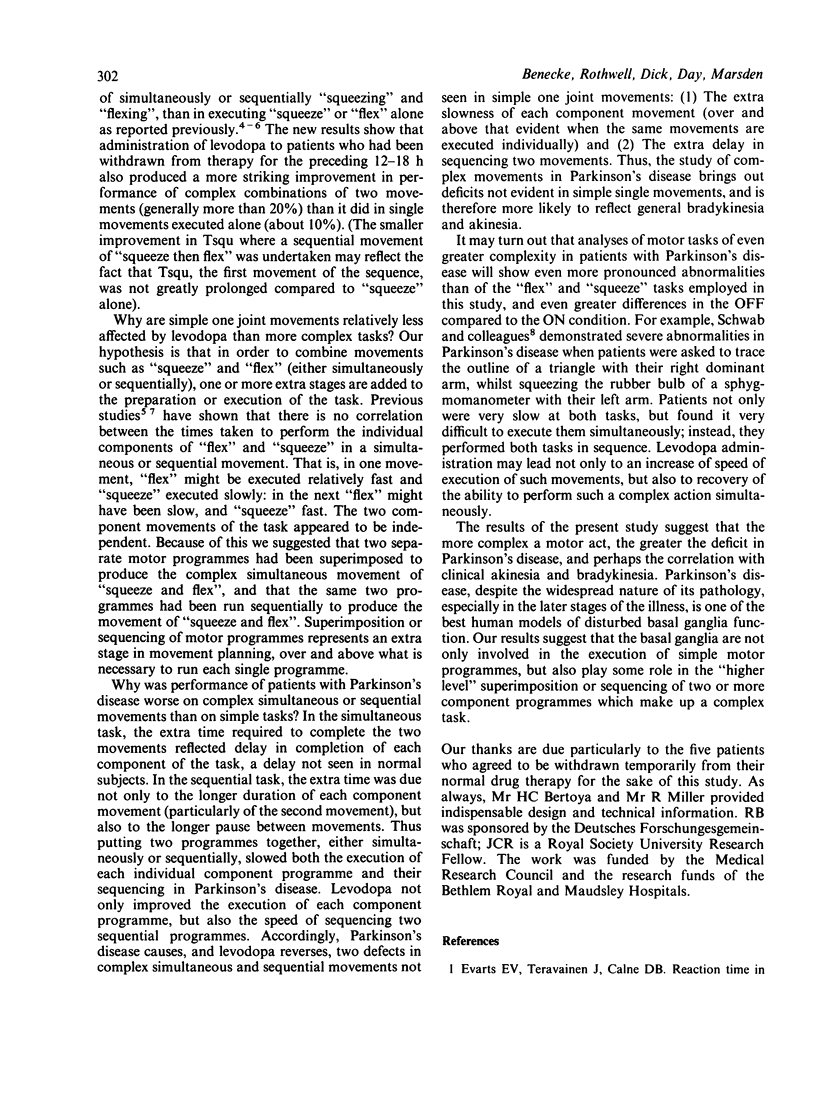

Selected References
These references are in PubMed. This may not be the complete list of references from this article.
- Benecke R., Rothwell J. C., Day B. L., Dick J. P., Marsden C. D. Motor strategies involved in the performance of sequential movements. Exp Brain Res. 1986;63(3):585–595. doi: 10.1007/BF00237481. [DOI] [PubMed] [Google Scholar]
- Benecke R., Rothwell J. C., Dick J. P., Day B. L., Marsden C. D. Performance of simultaneous movements in patients with Parkinson's disease. Brain. 1986 Aug;109(Pt 4):739–757. doi: 10.1093/brain/109.4.739. [DOI] [PubMed] [Google Scholar]
- SCHWAB R. S., CHAFETZ M. E., WALKER S. Control of two simultaneous voluntary motor acts in normals and in parkinsonism. AMA Arch Neurol Psychiatry. 1954 Nov;72(5):591–598. doi: 10.1001/archneurpsyc.1954.02330050061010. [DOI] [PubMed] [Google Scholar]


